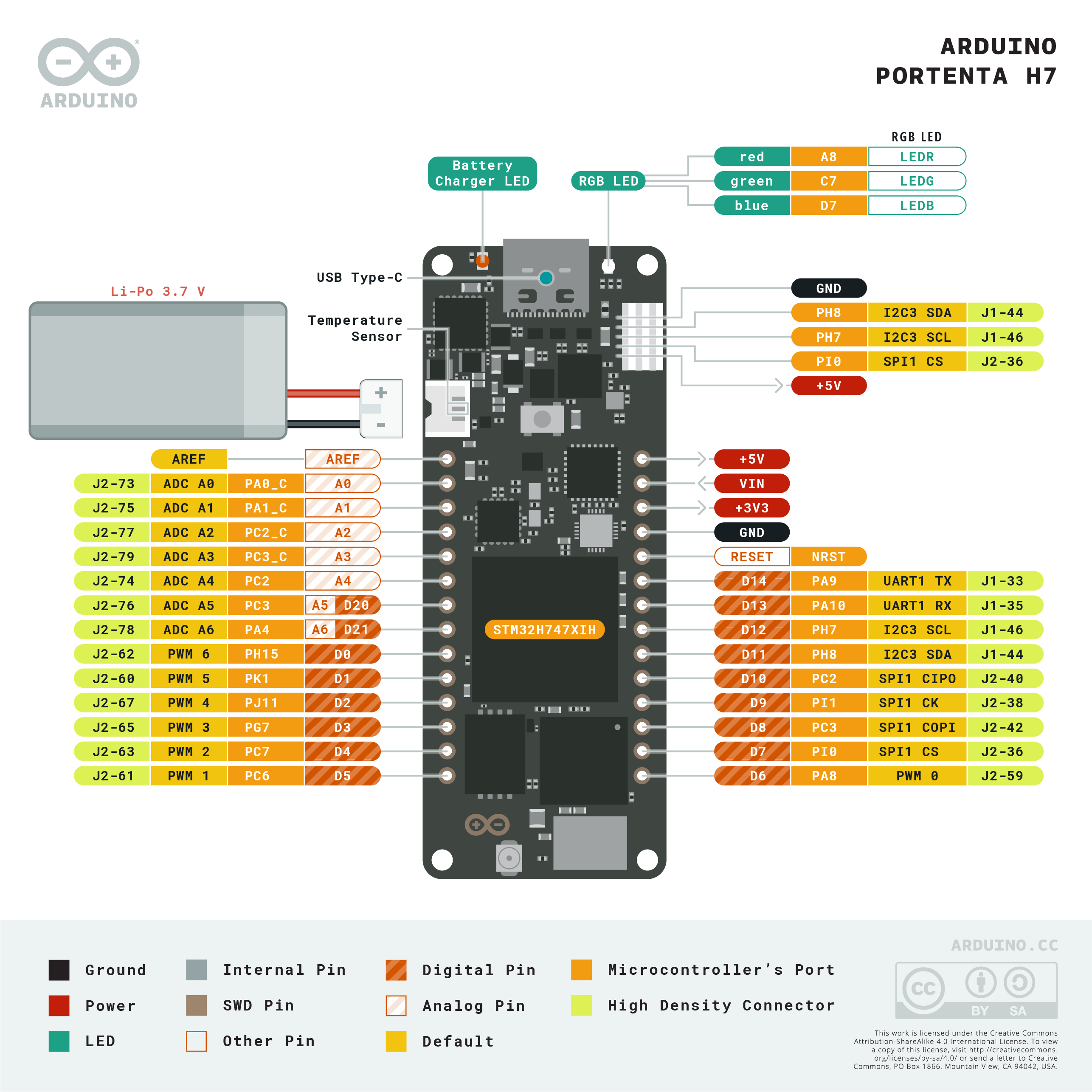Overview
The Portenta Vision Shield LoRa® brings industry-rated features to your Arduino Portenta. This hardware add-on will let you run embedded computer vision applications, connect wirelessly via LoRa® to the Arduino Cloud or your own infrastructure, and activate your system upon the detection of sound events.
The shield comes with:
- a 320x320 pixels camera sensor: use one of the cores in Portenta to run image recognition algorithms using the OpenMV for Arduino editor
- long range 868/915MHz LoRa wireless connectivity: get your Portenta H7 connected to the Internet of Things with low power consumption
- two on-board microphones for directional sound detection: capture and analyse sound in real-time
- JTAG connector: perform low-level debugging of your Portenta board or special firmware updates using an external programmer
- SD-Card connector: store your captured data in the card, or read configuration files
The Vision Shield LoRa® has been designed to work with the Arduino Portenta H7. The Portenta boards feature multicore 32-bit ARM® Cortex™ processors running at hundreds of megahertz, with megabytes of program memory and RAM. Portenta boards come with WiFi and Bluetooth.
Purchase this Shield together with the Portenta H7 for full performance.
Embedded Computer Vision Made Easy
Arduino has teamed up with OpenMV to offer you a free license to the OpenMV IDE, an easy way into computer vision using MicroPython as a programming paradigm. Download the OpenMV for Arduino Editor from our professional tutorials site and browse through the examples we have prepared for you inside the OpenMV IDE. Companies across the whole world are already building their commercial products based on this simple-yet-powerful approach to detect, filter, and classify images, QR codes, and others.
QR code detection example
Blob analysis example
Debugging With Professional Tools
Connect your Portenta H7 to a professional debugger through the JTAG connector. Use professional software tools like the ones from Lauterbach or Segger on top of your board to debug your code step by step. The Vision Shield exposes the required pins for you to plug in your external JTAG.
Getting Started
The Portenta tutorials section at the Arduino Pro website contains all the information you need to configure the Portenta H7, as well as the Vision Shield LoRa®, and the OpenMV editor for computer vision applications .
Need Help?
Check the Arduino Forum for questions about the Arduino Language, or how to make your own Projects with Arduino. Need any help with your board please get in touch with the official Arduino User Support as explained in our Contact Us page.
Warranty
You can find here your board warranty information.
Tech specs
The Arduino Vision Shield is an active add-on to the Portenta family of boards.
| CAMERA | Himax HM-01B0 camera module (manufacturer site) |
| RESOLUTION | 320 x 320 active pixel resolution with support for QVGA |
| IMAGE SENSOR | High sensitivity 3.6μ BrightSense™ pixel technology |
| MICROPHONE | 2 x MP34DT05 (datasheet) |
| CONNECTIVITY | 868/915MHz ABZ-093 LoRa Module with ARM Cortex-M0+ (datasheet) |
| LENGTH | 66 mm |
| WIDTH | 25 mm |
| WEIGHT | 8 gr |
Documentation
OSH: Schematics
Study how the Portenta H7 board works using the following files:
SCHEMATICS IN .PDF DATASHEET IN .PDF
Pinout Diagram
The Portenta H7 follows the Arduino MKR form factor, but enhanced with the Portenta family 80 pin high-density connector. Learn more about the board's pinout by reading the board's pinout documentation.

Download the full pinout diagram as PDF here.
Interactive Board Viewer
Additional I2C Port
The Portenta H7 has an additional connector meant as an extension of the I2C bus. It's a small form factor 5-pin connector with 1.0 mm pitch. The mechanical details of the connector can be found in the connector's datasheet.
The I2C port, also referred to as the Eslov self-identification port within Arduino, comes with: SDA, SCL, GND, +5V, and an extra digital pin meant to send an alarm to the otherwise plain I2C devices connected to it. The pinout is shown in the following image:

If you are interested in designing your own modules for Arduino boards with this expansion port, the connector we suggest using is code: SHR-05V-S-B, also in the picture.

























